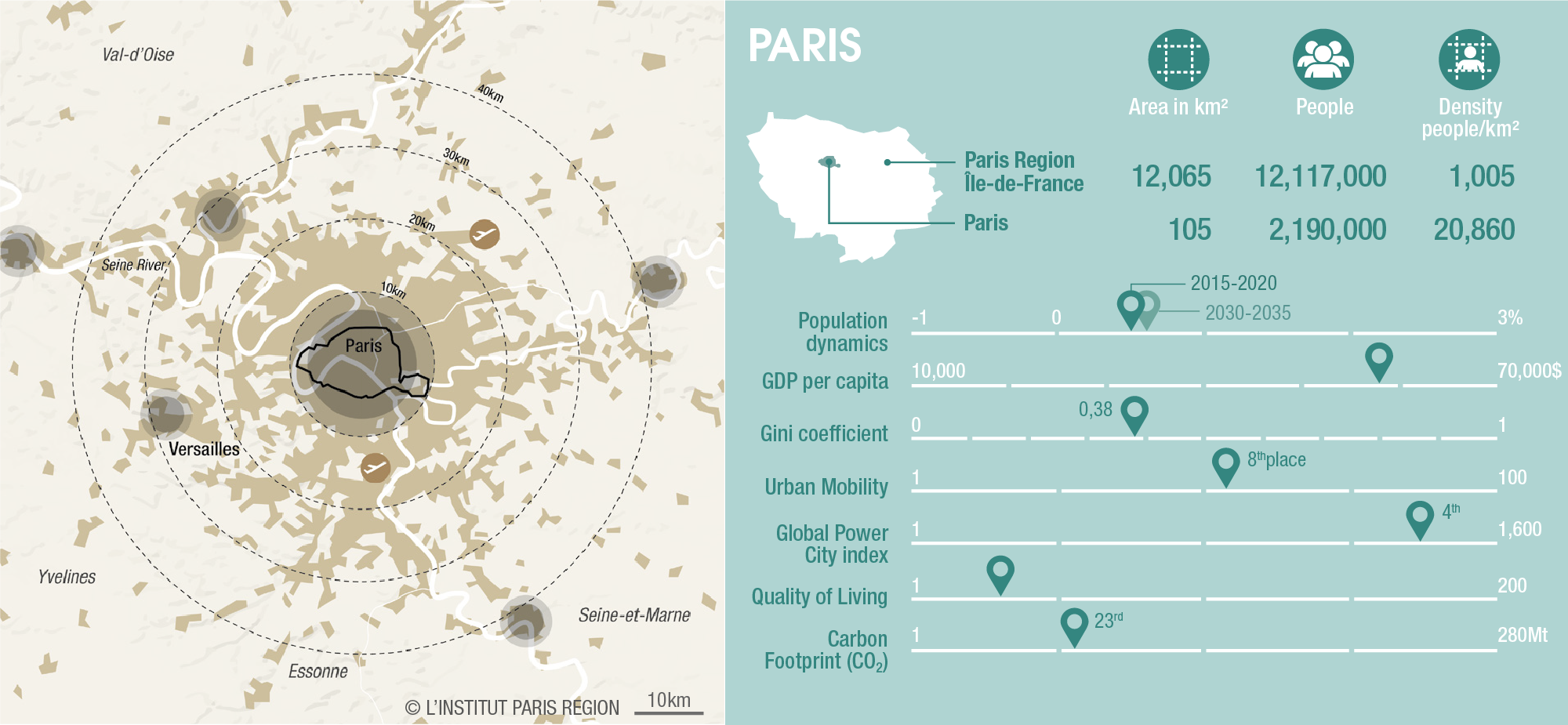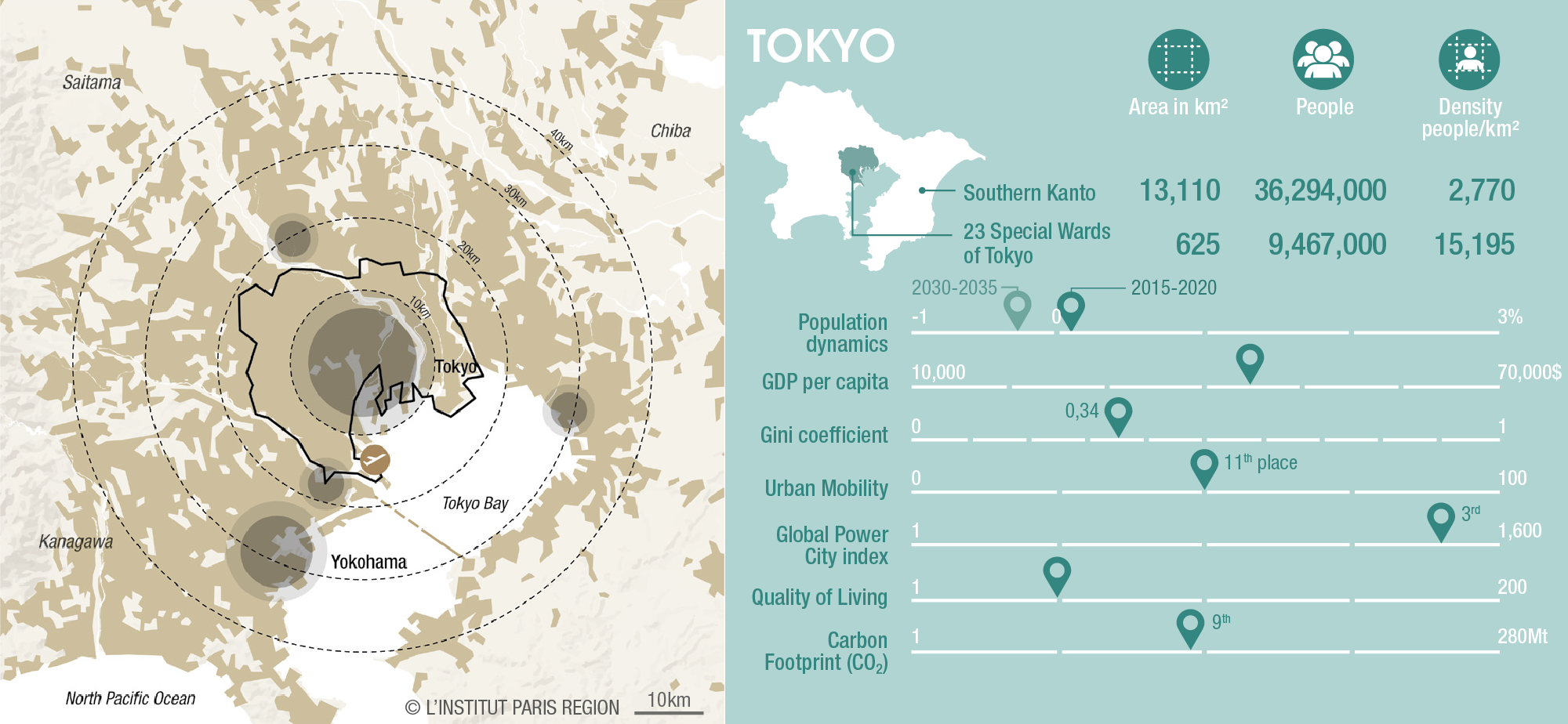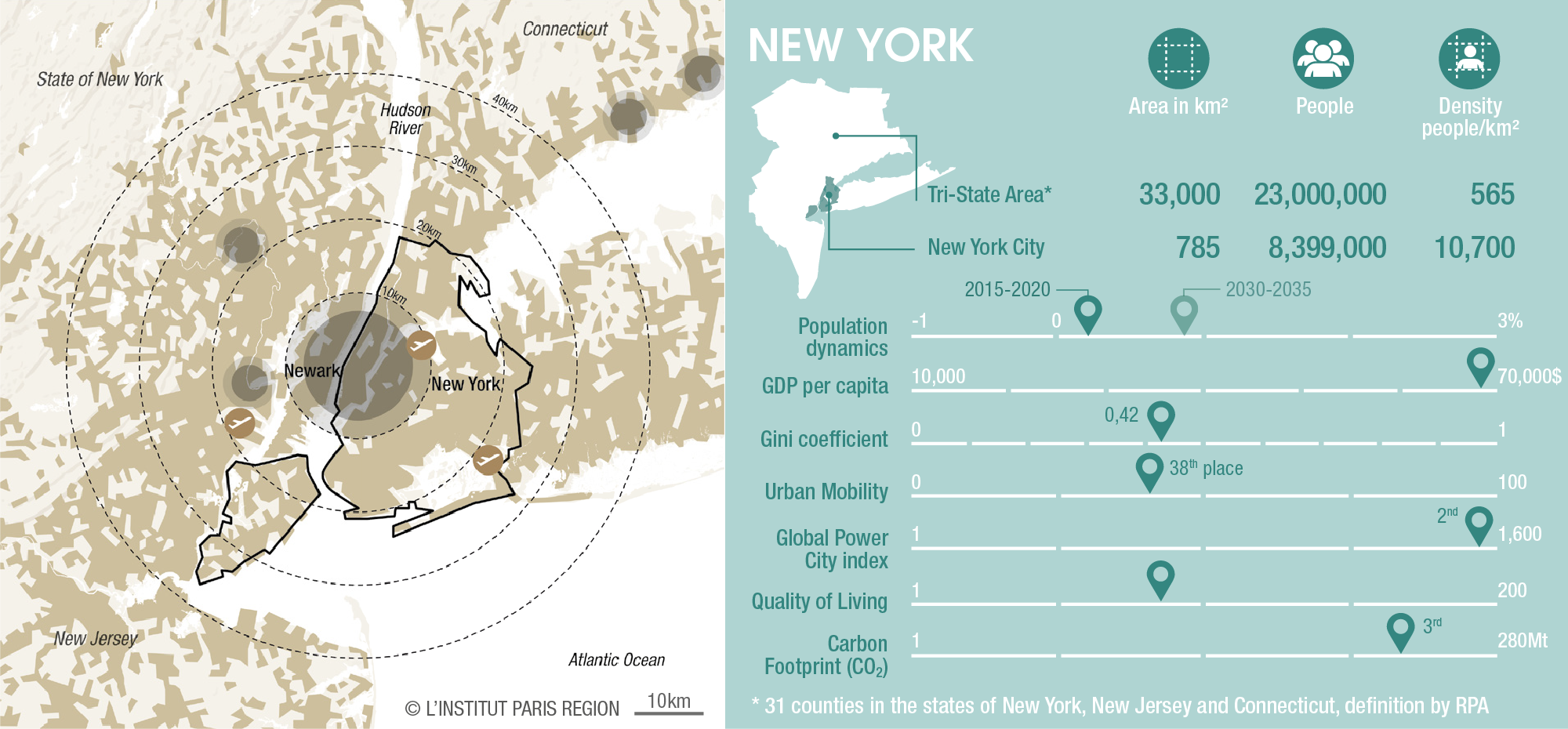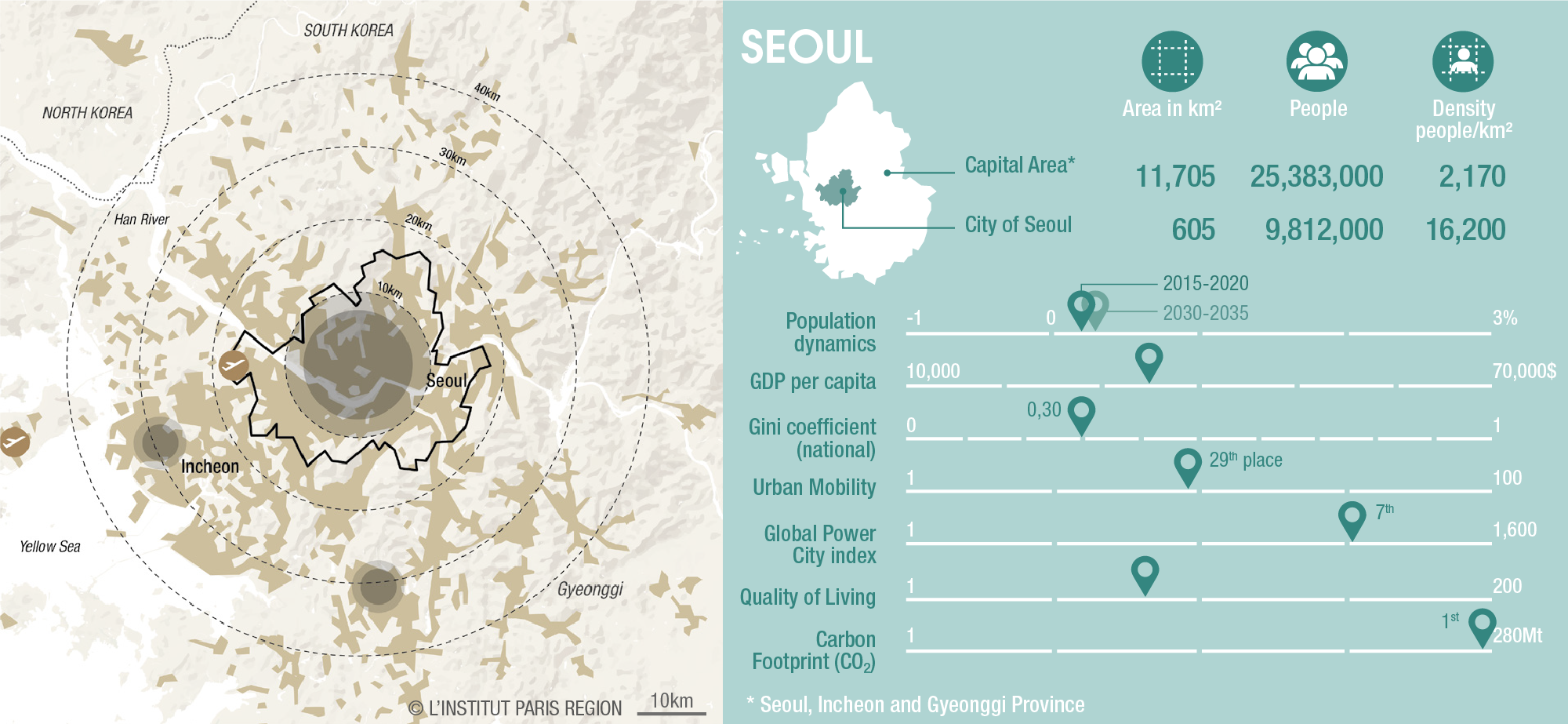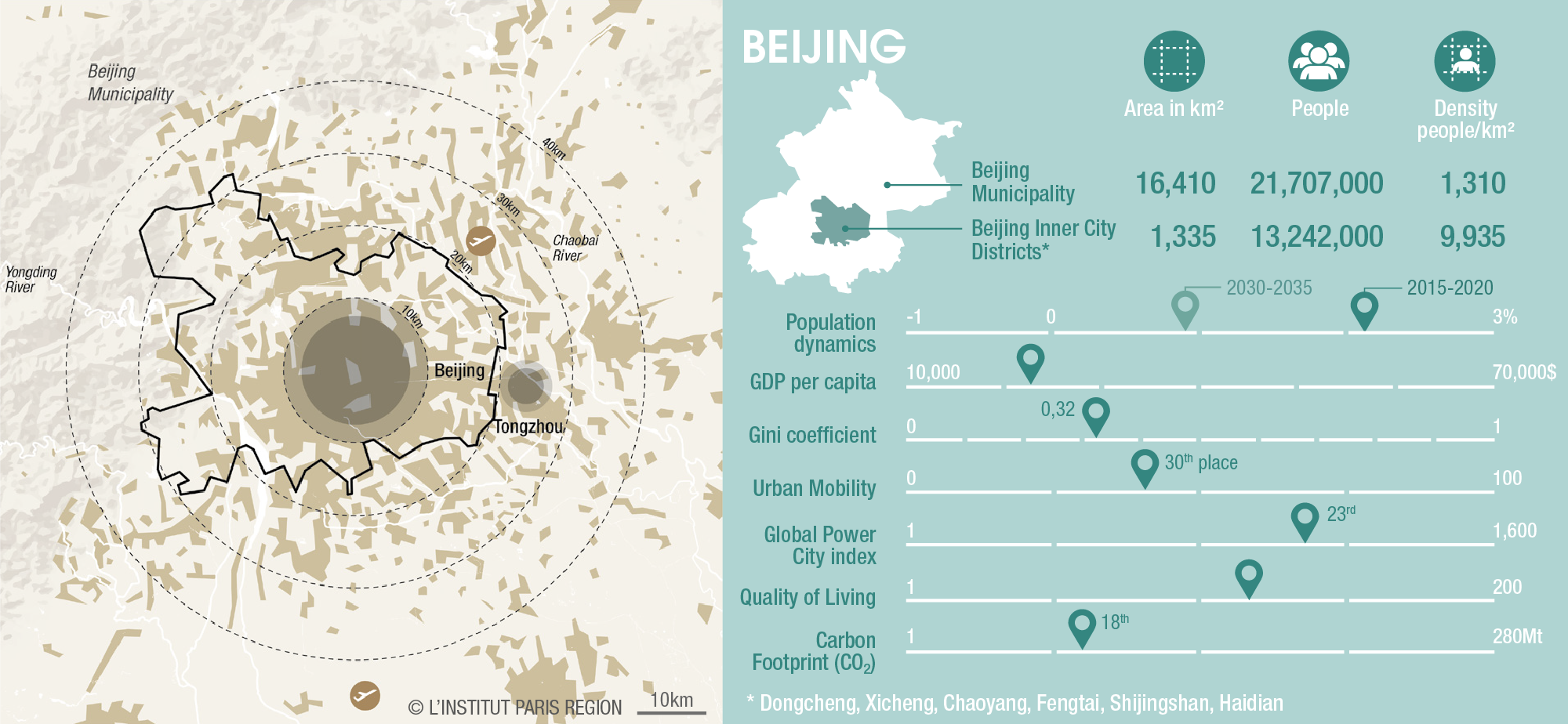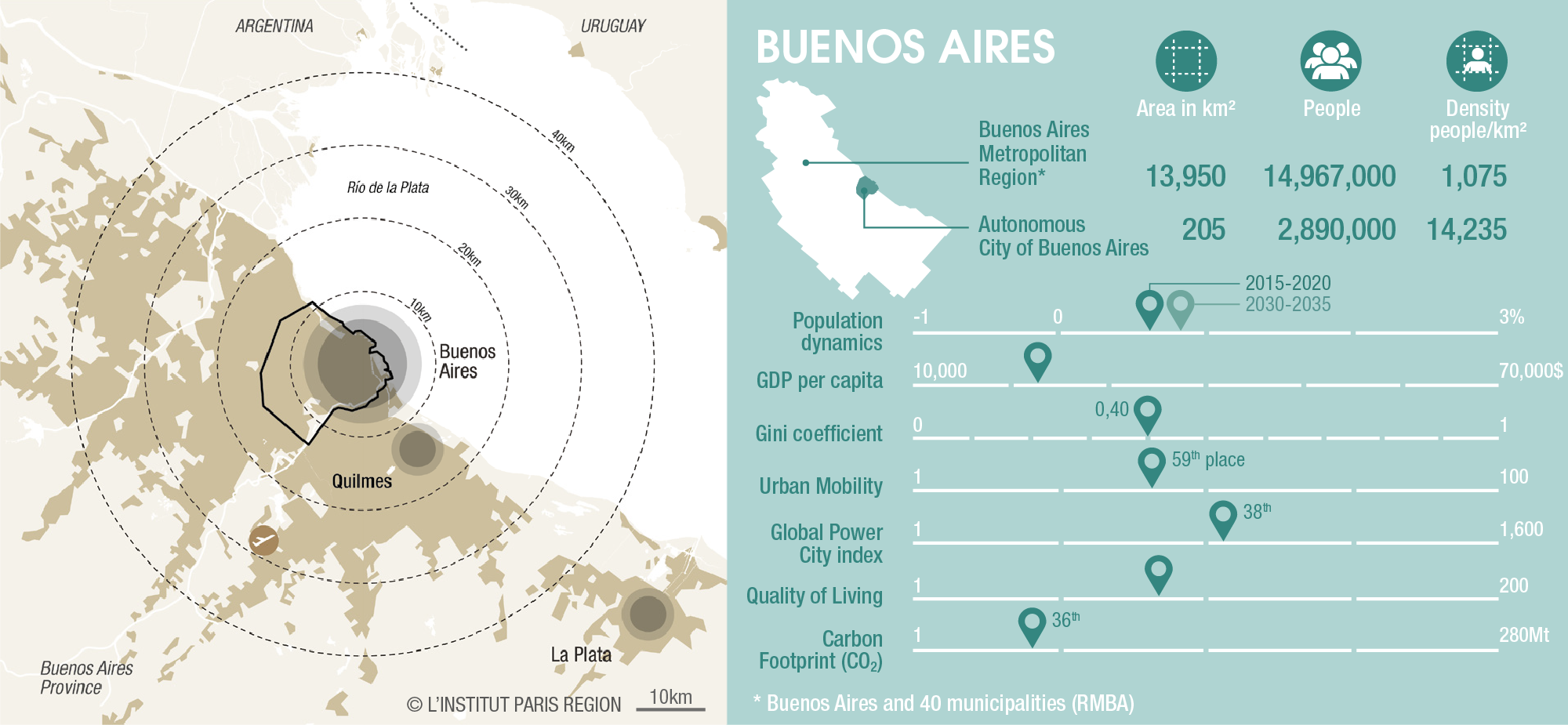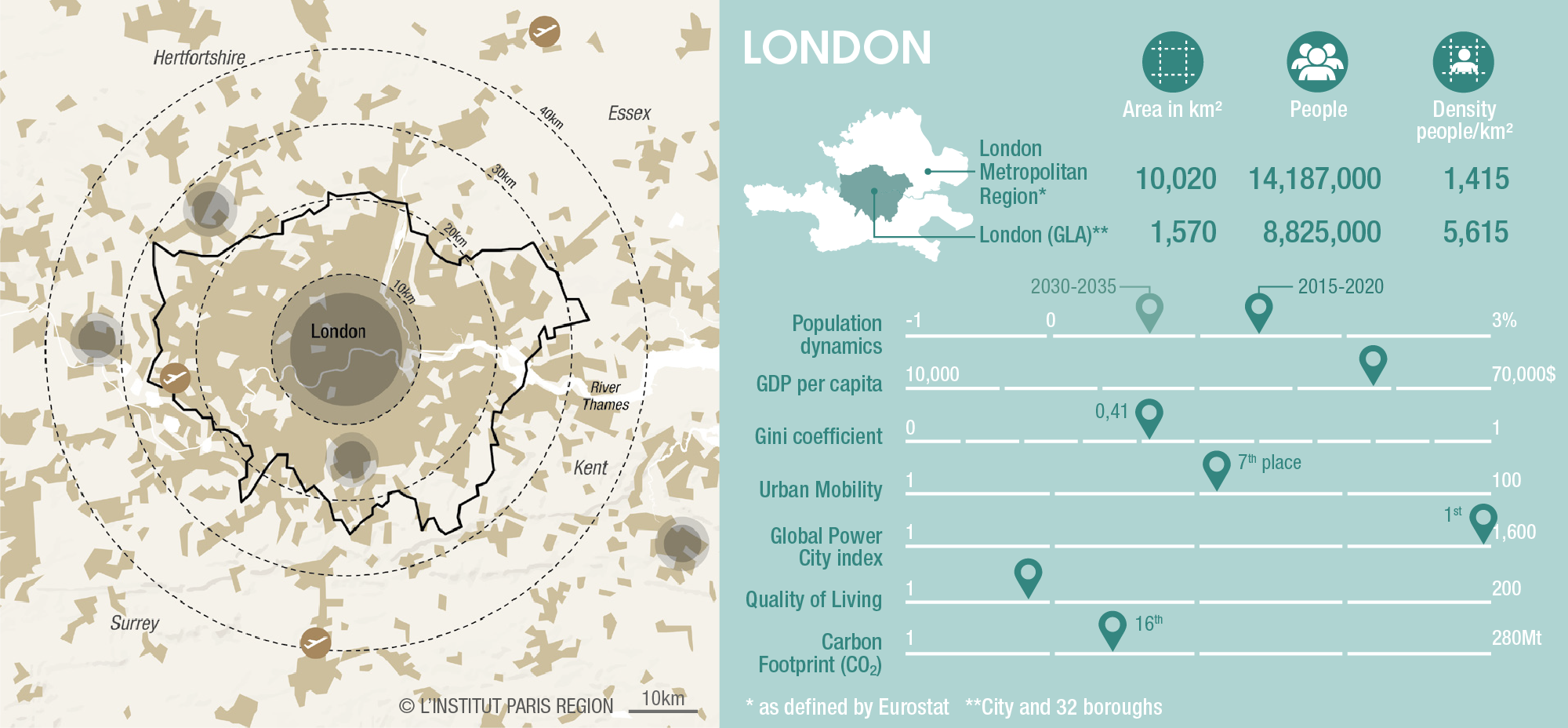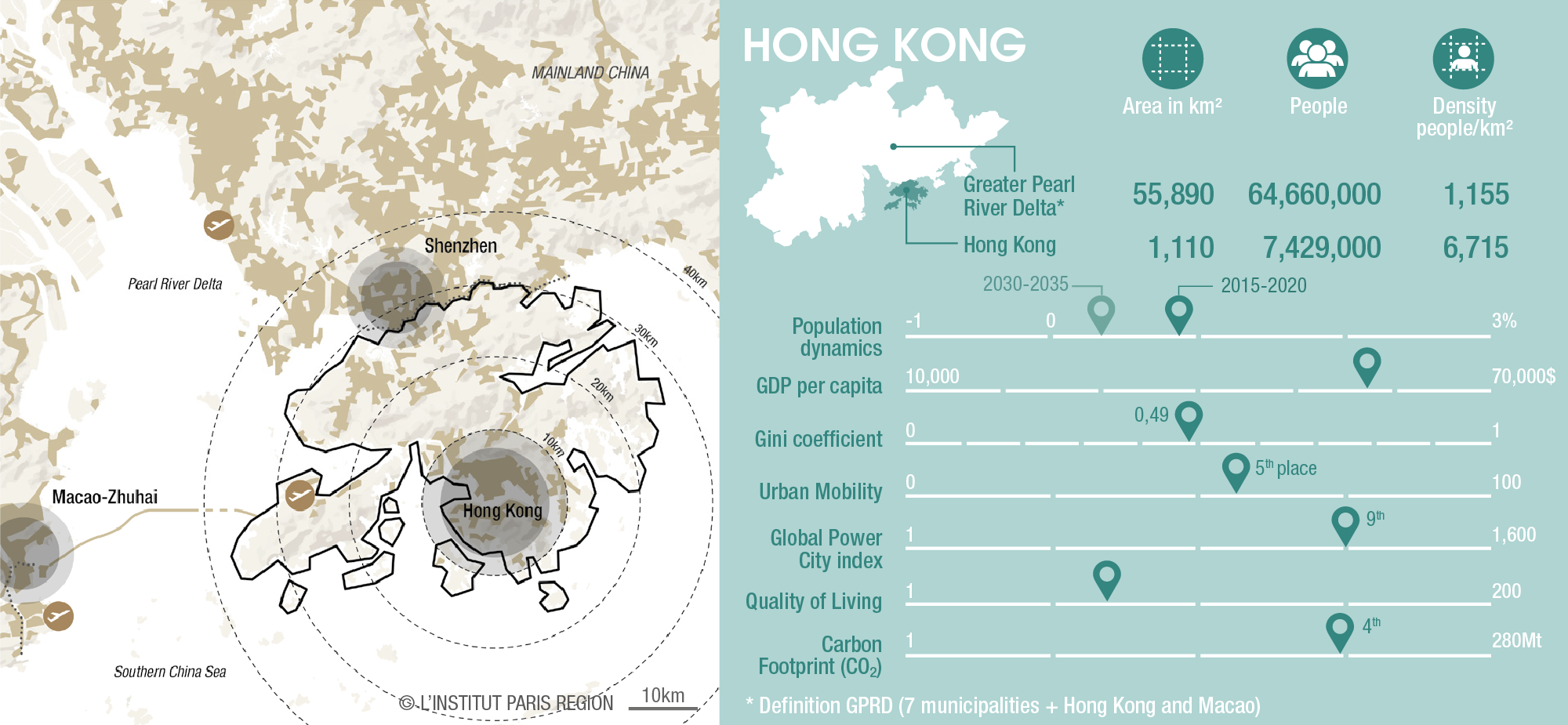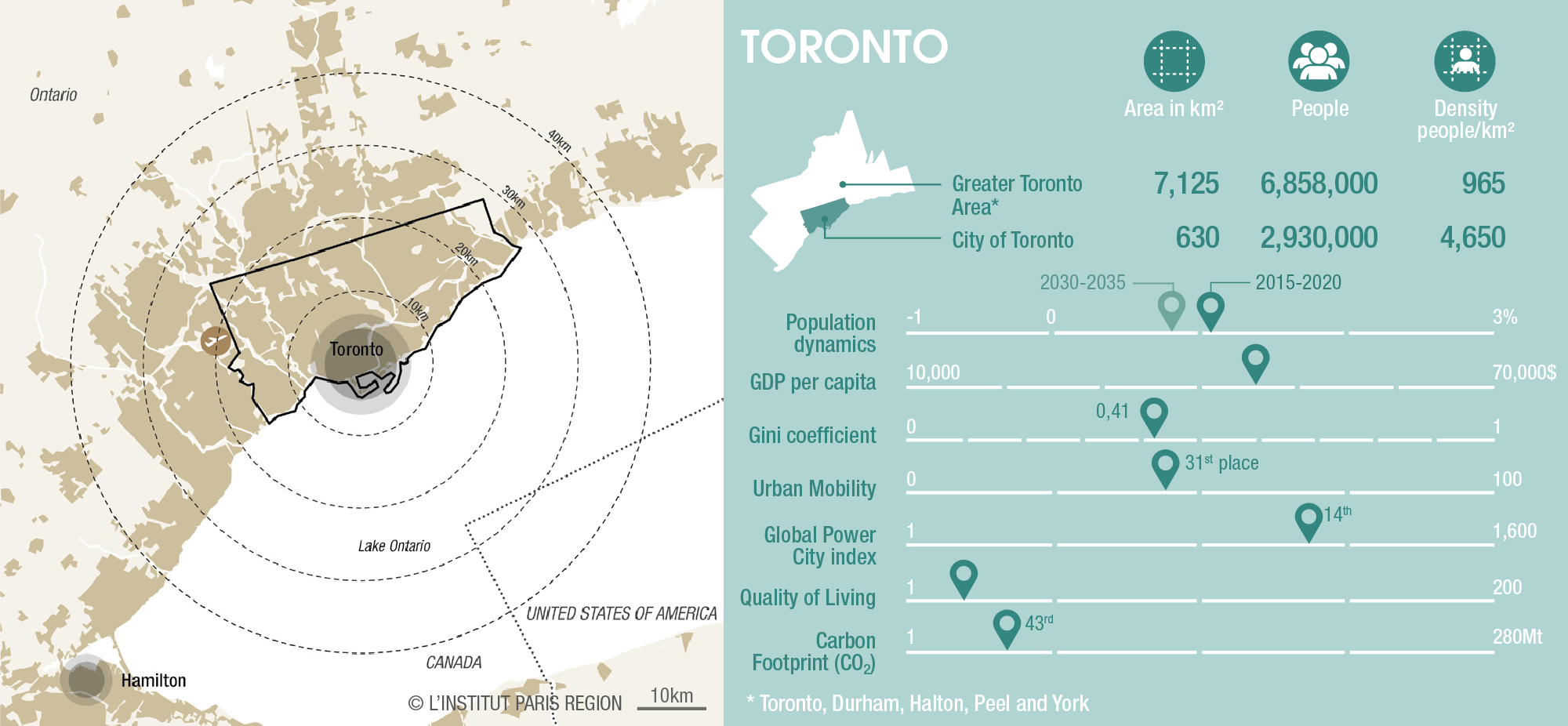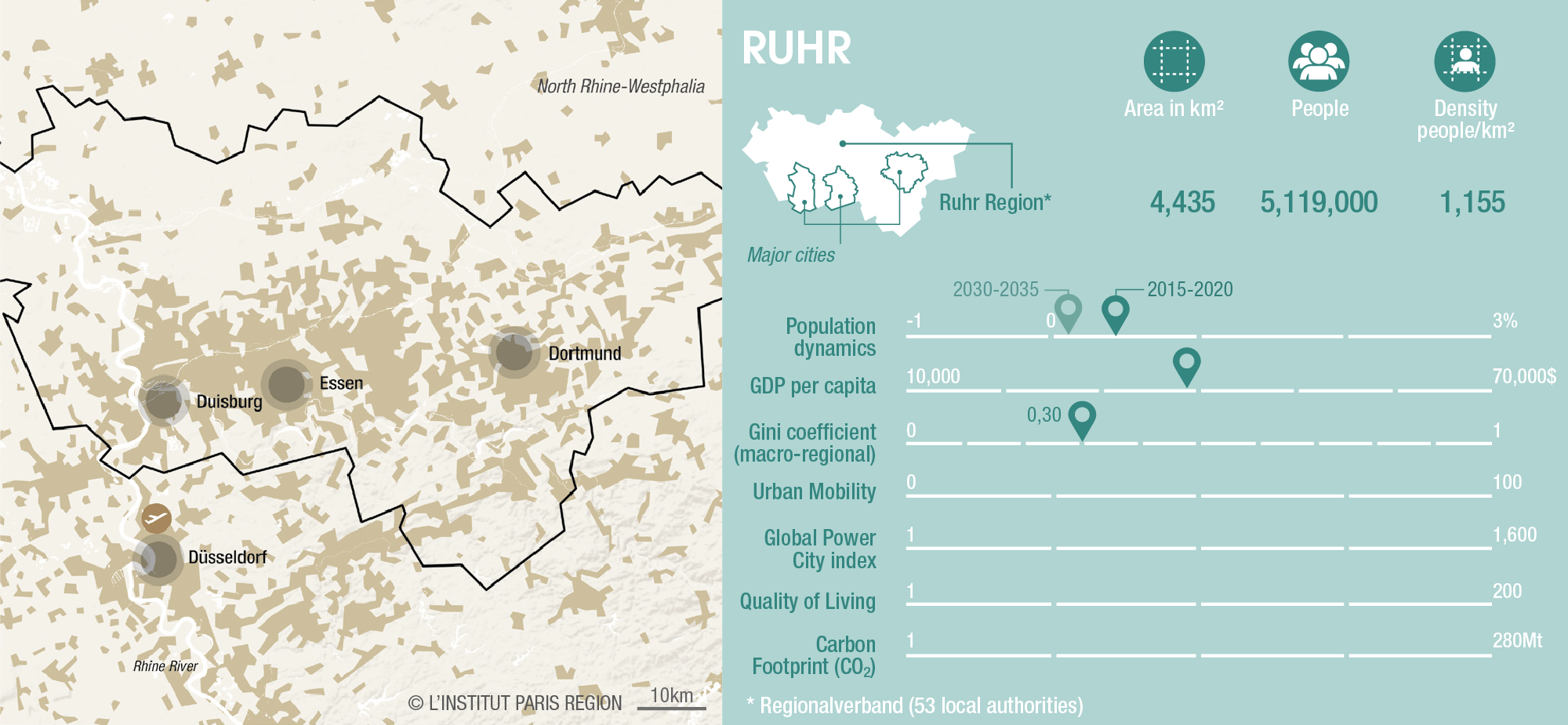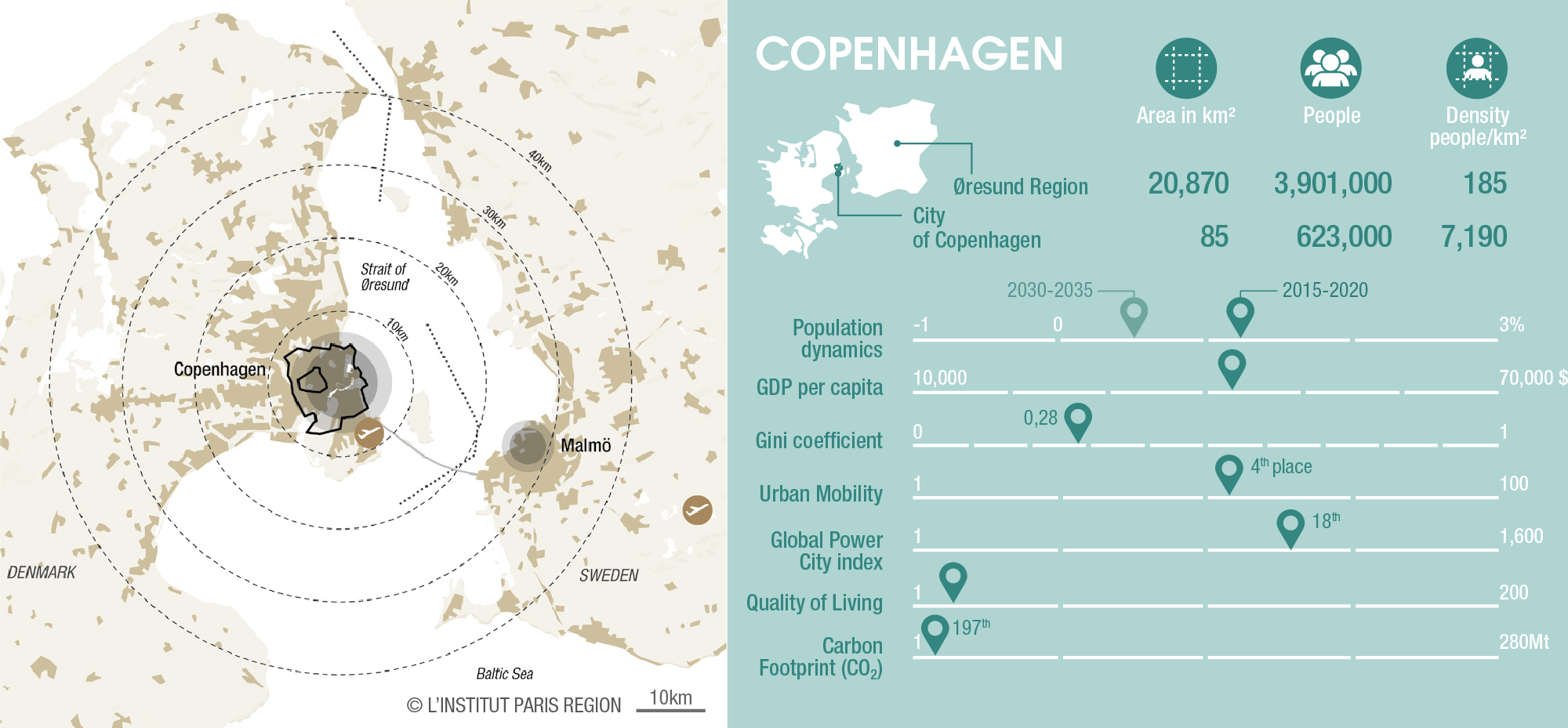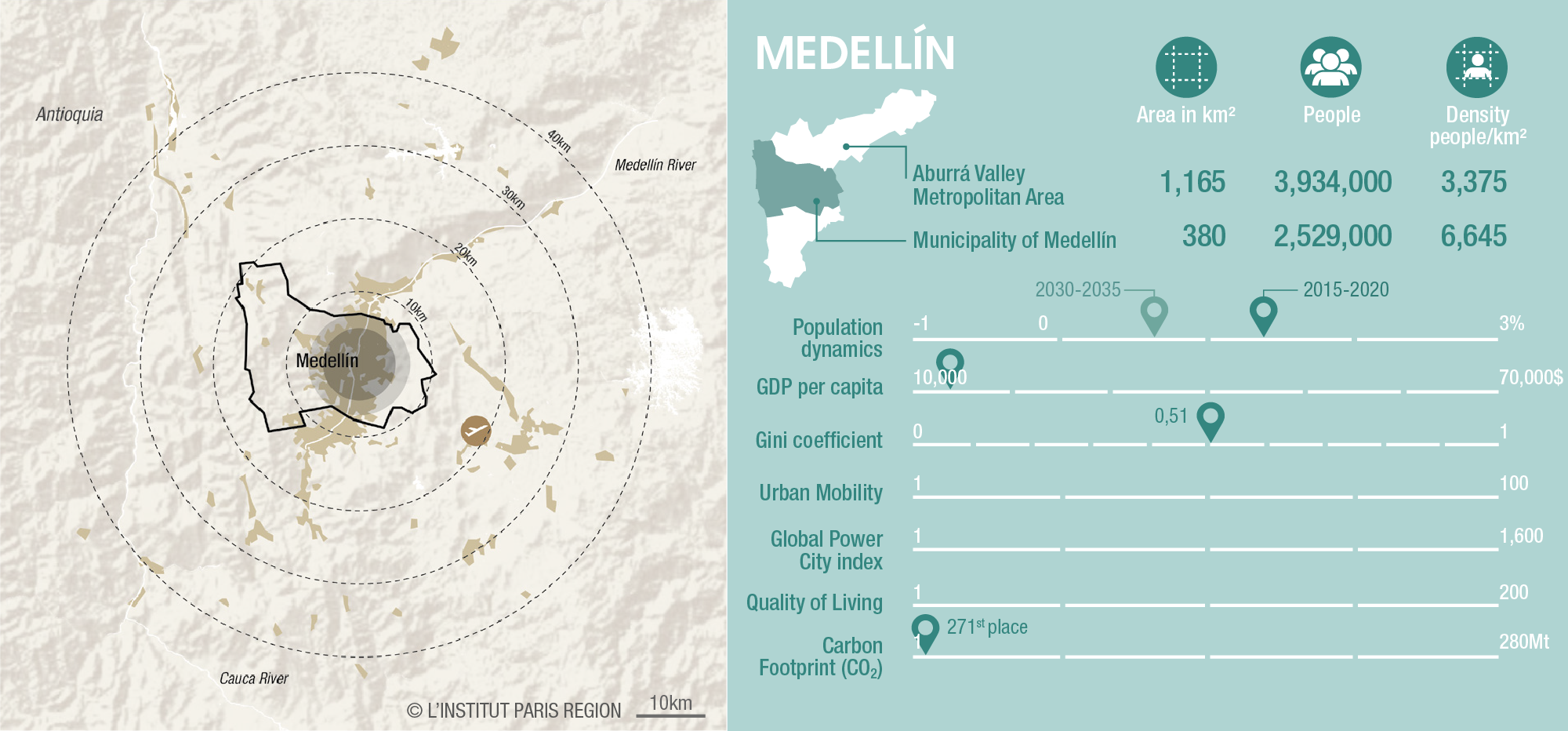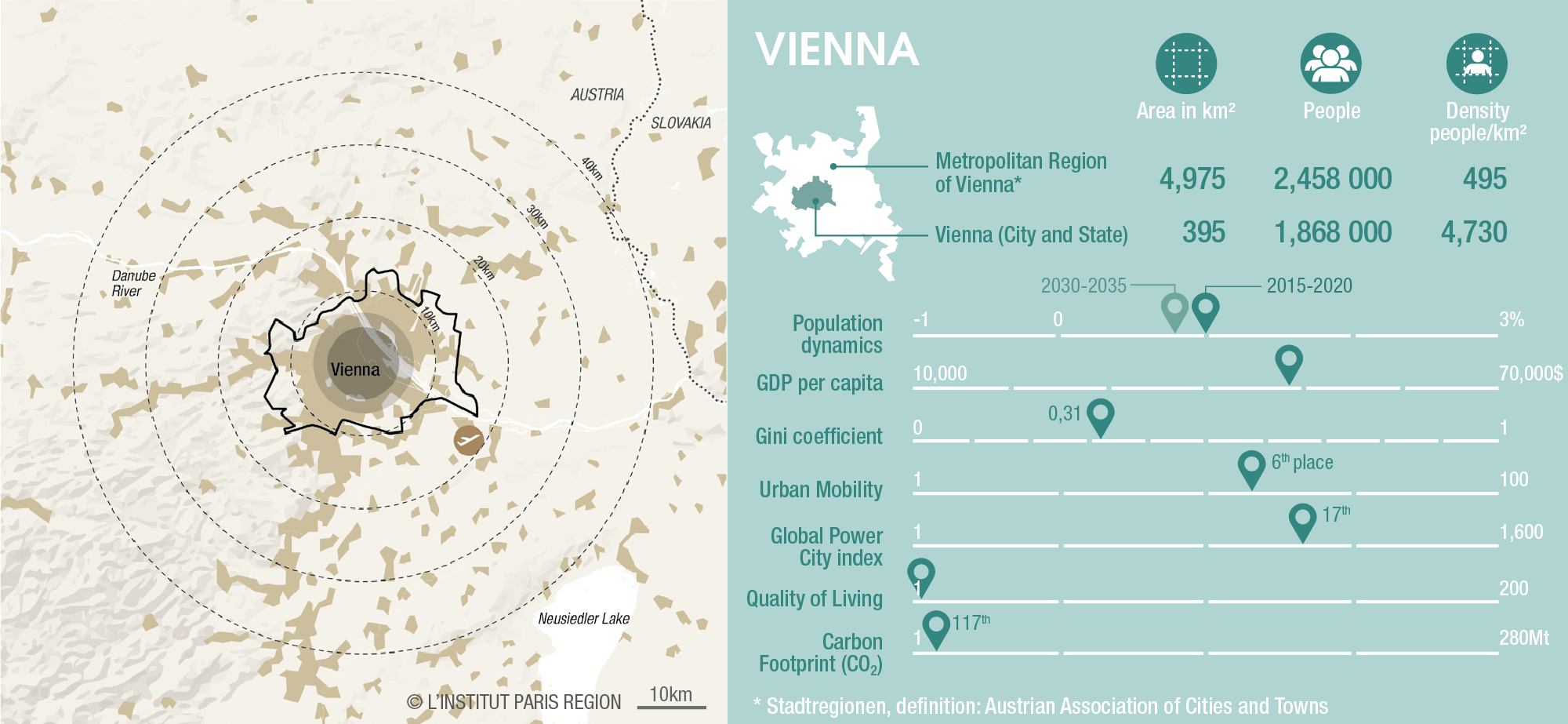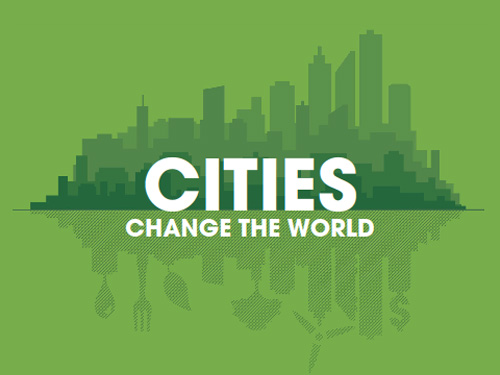Is Paris denser than London? Is New York wealthier than Singapore? How do the carbon footprints of Moscow, Tehran and Toronto compare? In the context of metropolitanisation, cities are increasingly being measured, gauged, classified and compared. The following Key References aim to bring together resources on a variety of themes, maps and statistics, allowing reasoned comparisons.
The construction of these References is the result of new work on data collection, analysis and cartography based on numerous international sources that have been cross-referenced and checked. For practical reasons, only 18 cities have been selected: not only large cities that occupy a prominent place in this book, but also cities whose inspiring projects are mentioned in an article. To gain a closer understanding of the geographical reality of these metropolitan regions, it has often been necessary to step beyond administrative frameworks and compare different scales. These References include:
- Cartographic references showing geographical features and extent of urban areas;
- Administrative references (municipal and regional boundaries);
- Statistical references relating to surface areas, populations and densities;
- A barometer that compares cities based on the following themes: current and future demographic dynamics; global positioning (Global Power City Index); economic performance (GDP per capita); income inequalities (Gini coefficient); quality of mobility facilities (Urban Mobility Index); quality of life (Mercer index); carbon footprint (Global Carbon Footprint).
Observations
These References reveal contrasting demographic dynamics. Johannesburg, Beijing, London and Medellín have experienced significant growth in recent years, unlike Seoul, New York and Tokyo, where growth has been much slower. The UN forecasts for 2020-2035 positive average annual growth rates for urban agglomerations, but lower than those of the period 2005-2020, with populations likely to drop in certain cities such as Tokyo. Density varies according to the boundaries being considered. Undeveloped uplands mask the hyper-density of neighbourhoods in Hong Kong and Singapore. Seoul, Tokyo, Tehran, Buenos Aires and the City of Paris appear to be very dense, while Grand Paris and London have fairly similar, moderate levels of density. Benchmarking is a measurement and quantification technique that relies on the statistical comparison of sets or structures, often comprising a wide range of factors. Some benchmarks rank cities according to their global positioning. The Global Power City Index, for example, puts London at the top of its ranking, followed by New York, Tokyo, Paris, Singapore, Amsterdam, Seoul, Berlin and Hong Kong. Regarding the GDP per capita, New York is ahead of Singapore, Paris, London, Hong Kong, Toronto and Tokyo. Brookings1 notes that the presence of Asian (especially Chinese), Middle Eastern and African cities among the 300 largest metropolitan economies increased sharply between 2012 and 2016, while that of European and North American cities is declining. Copenhagen, the Ruhr, Vienna and Tokyo are among the most egalitarian cities of our sample, while Singapore, Hong Kong, Medellín and Johannesburg are the most socially inequitable. In terms of quality of life, Vienna, Copenhagen, Toronto, Singapore and Paris are the highest-ranking cities in our selection. Analysis of carbon footprints highlights high levels of emissions in wealthy cities and those where cars are used most extensively. In our selection, Seoul, New York, Hong Kong, Singapore, Tokyo, Johannesburg, Tehran, Moscow, London and Beijing have the highest greenhouse gas emissions. These ten cities are in the Top 20 producers of greenhouse gas emissions among a cohort of 13,000 cities. Paris occupies the 23rd position in the study and the 11th in our sample.
Further exploration
Cities are “relational nodes, constituted by the flows of capital, immigrants and information”2 and thus connected to other places in the world: the mobility of urban models and knowledge-sharing on urban policies are an integral part of their practices. Beyond the simple collection of best practices, international comparison makes it possible to explore the approaches, policies and strategies implemented in cities. At the international level, data collection raises questions on the limitations of comparability relating to the disparity of the sources, their availability, and variations in the definitions and scales that are applied. The geographical definition of urbanisation (a continuous built-up area) is often used in research work3: in our work, it has been associated with the nearest administrative area. Benchmark indicators are also subject to discussion because most cities do not appear in rankings. Furthermore, a single statistic is not always enough to illustrate a complex situation, such as social disparities (Gini coefficient)4. Some rankings tend to be influenced by the economic vested interests of the organisations that commission them. The benchmark is also an instrument for the orientation of public initiatives5; it remains, however, a very efficient way of making what is not measurable, measurable and it facilitates comparison. Ultimately, international comparison makes it possible “to observe the urban effects of a globalised, interconnected world” and to “distinguish the respective influences of different territorial scales […] on contemporary urban dynamics”6. It can help us to step beyond categories (northern and southern cities), to observe convergences and divergences, and broaden perspectives.
Maximilian Gawlik, Landscape Architect and Urbanist,
with Paul Lecroart, Senior Urbanist, L’Institut Paris Region
1. Brookings, Global Metro Monitor 2018.
2. McCann, Eugene, Urban Policy Mobilities and Global Circuits of Knowledge: Toward a Research Agenda, Annals of the Association of American Geographers, 2011.
3. To compare world cities on the bases of their actual expansion, see the method developed by Geopolis
4. Boulant, Justine et al., Income Levels and Inequality in Metropolitan Areas: A Comparative Approach in OECD Countries, OECD Working Papers, 2016.
5. Sciences Po, École urbaine, Master Governing the Large Metropolis and APUR; Benchmark : Paris parmi les grandes métropoles du monde, 2015.
6. Authier Jean-Yves et al., Introduction, D’une ville à l’autre. La comparaison internationale en sociologie urbaine, Paris, La Découverte, March 2019, 335 p.


